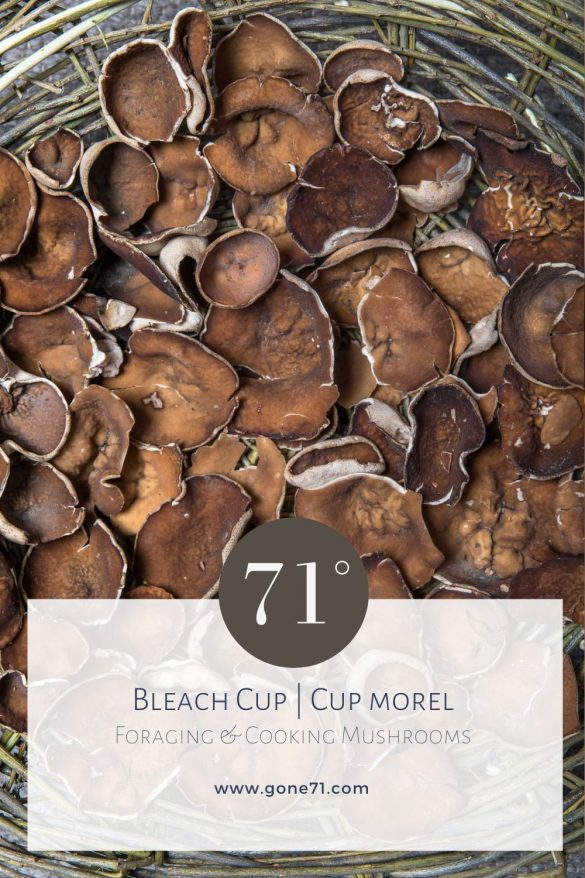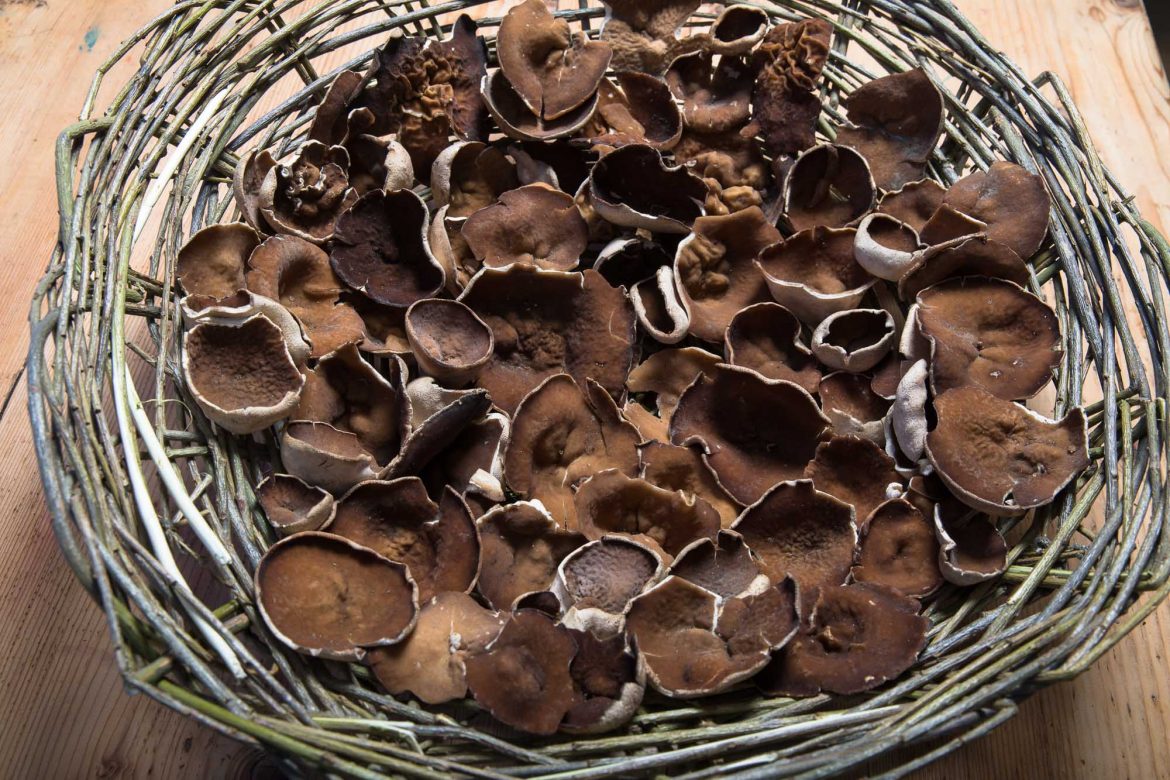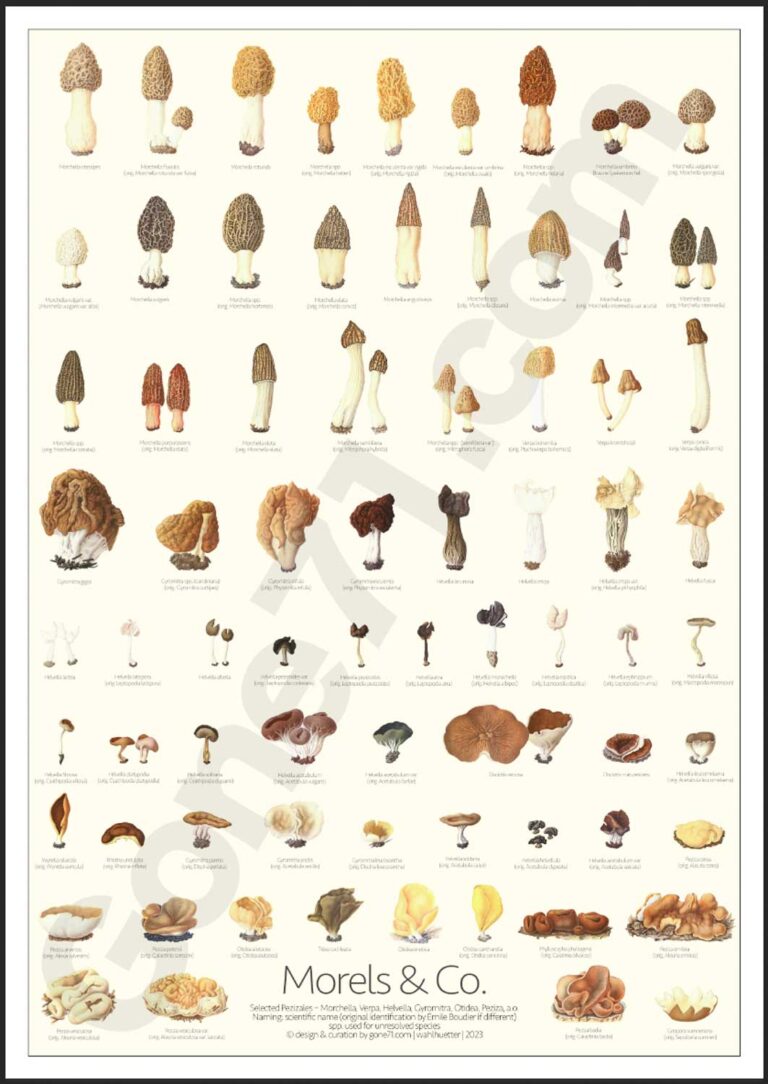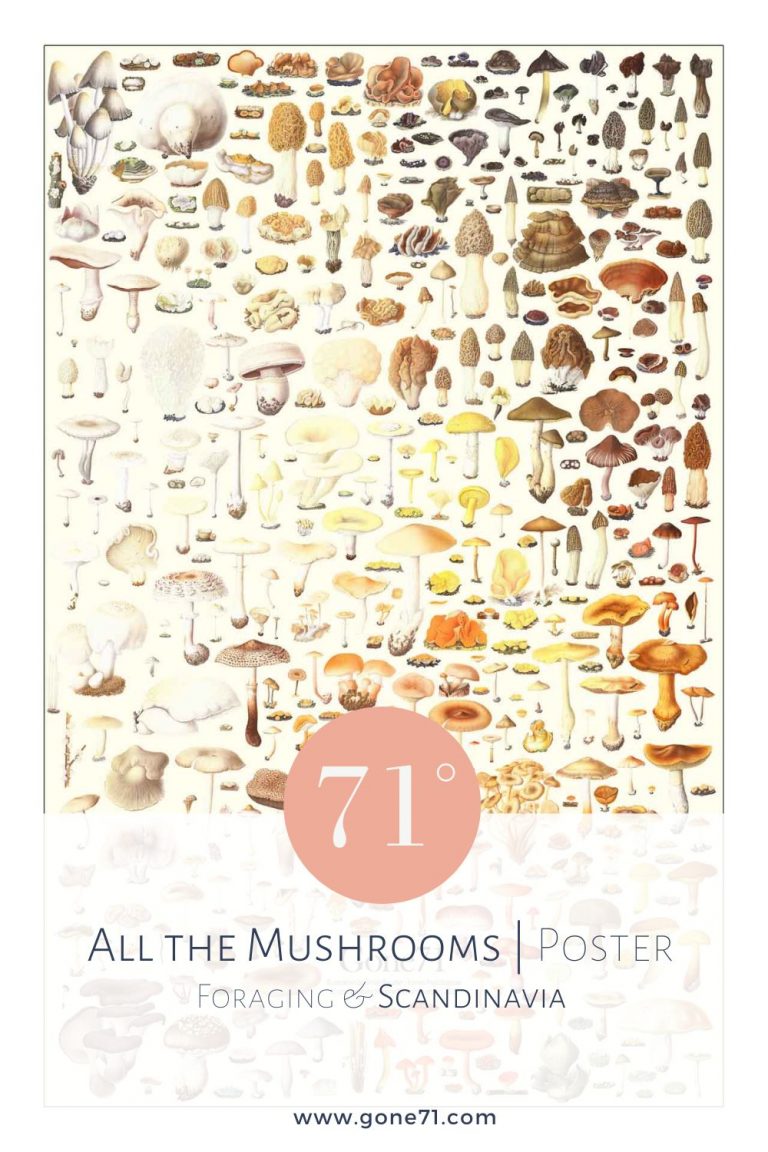swe.: klormurkla | nor.: Skivemorkel | fin.: Suonimörsky | dt.: Morchelbecherling, Aderbecherling
The bleach cup also known as cup morel or veiny cup fungus is a little-known delicacy that is one of the first mushrooms of spring. Many consider them to be on par with morels in taste, and in some areas they appear in large numbers, albeit for a short time. That’s no coincidence either, because the cup morel is a close relative of the coveted common morel and has therefore similar taste qualities.
The fresh mushrooms, often the size of the palm of a hand, have a chlorine-like odor that dissipates when cooked.
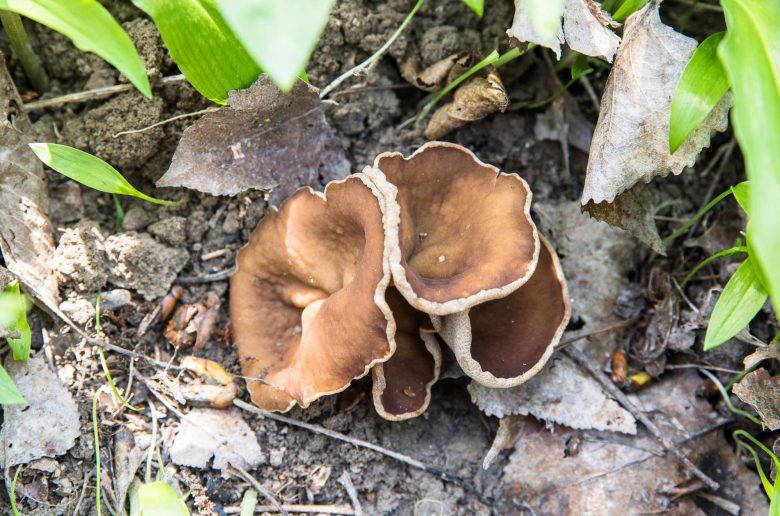
Habitat of bleach cups (Disciotis venosa)
In many cases, morel and bleach cup share the same habitats. Alluvial forests, especially where a lot of wild garlic grows, are particularly good locations. The latter plant can also become a problem, because once the wild garlic is on the rise, there is often not much to see from the forest floor below. Finding cup morels at this point is often like looking for a needle in a haystack.
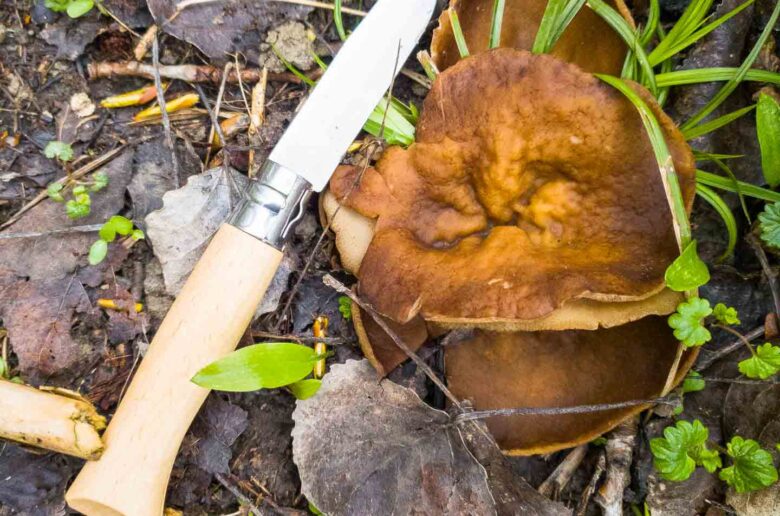
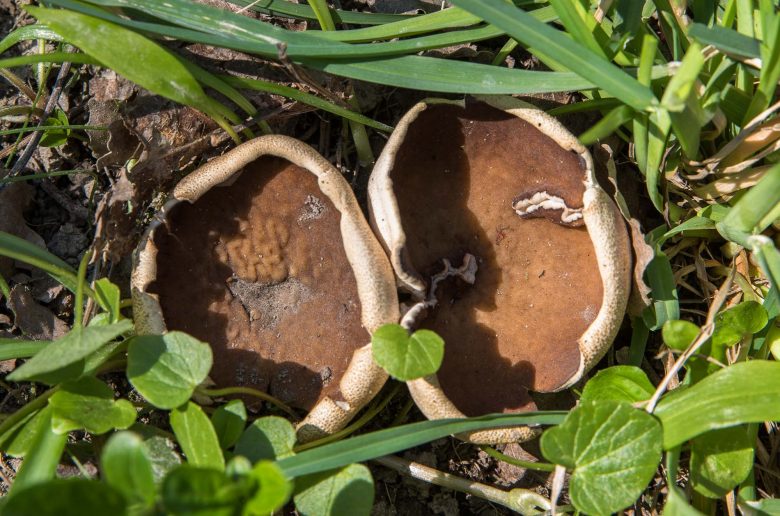
Appearance of bleach cups (Disciotis venosa)
diameter: up to 20cm
months: March – June (mainly April and Mai)
colour: light brown, darker when older
habitat: Alluvial forests, very site-loyal, grow often along with morels, wild garlic, ash…
characteristic: smell of chlorine
Depending on the age, the fruit bodies are cup or disc shaped and can reach impressive diameters of up to 20 cm. However, they are usually much smaller. When young, the fungus has a light brown surface that darkens with age. The underside is whitish and also darkens with age. The flesh is very firm and very brittle, with the flesh being white under the brown outer skin.
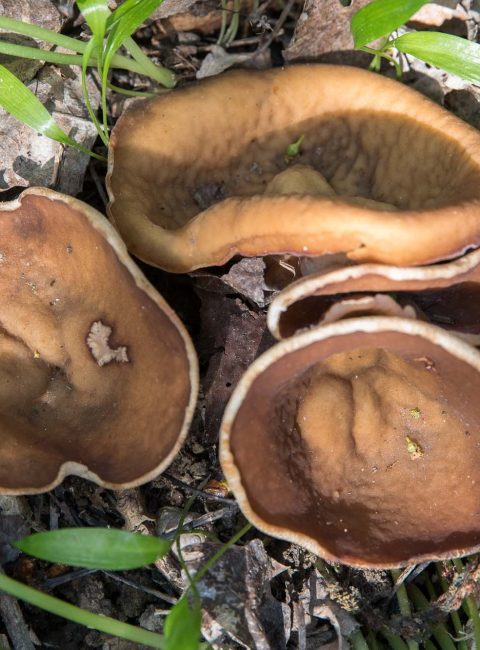
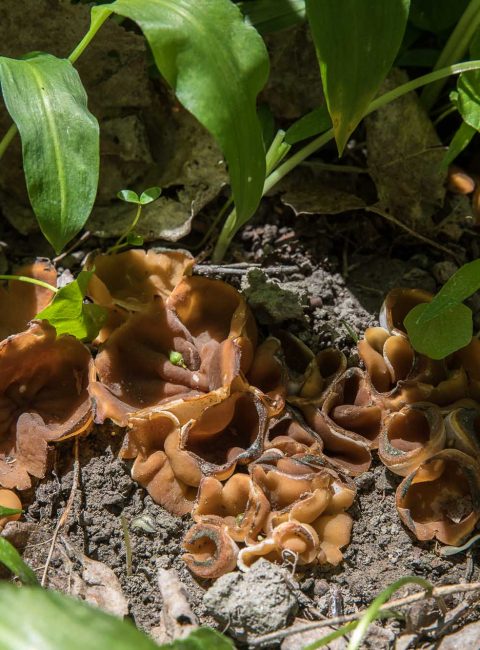
Confusion of bleach cups (Disciotis venosa) with other mushrooms
Unfortunately, there are some mushrooms that closely resemble cup morels. You have to be very careful when collecting that you don’t mix them up. Some candidates here are: pig’s ears (Gyromitra ancilis) (edible), the Palomino cup (Peziza varia) and other non-edible species from the genera Gyromitra, Helvella and Peziza. Aside from the location, cup morels are distinguished primarily by their chlorine smell.
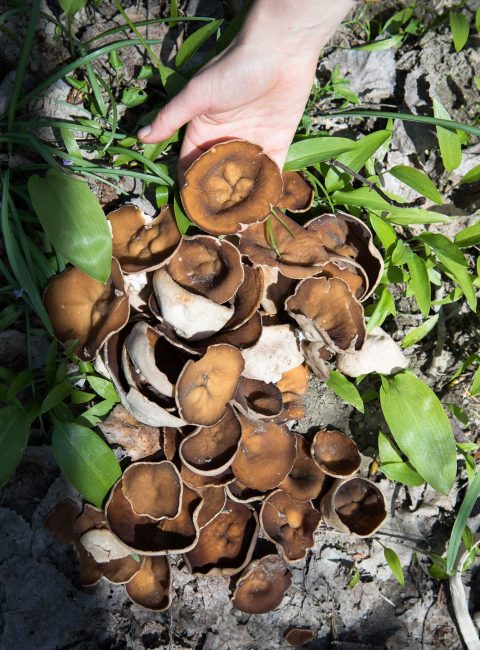
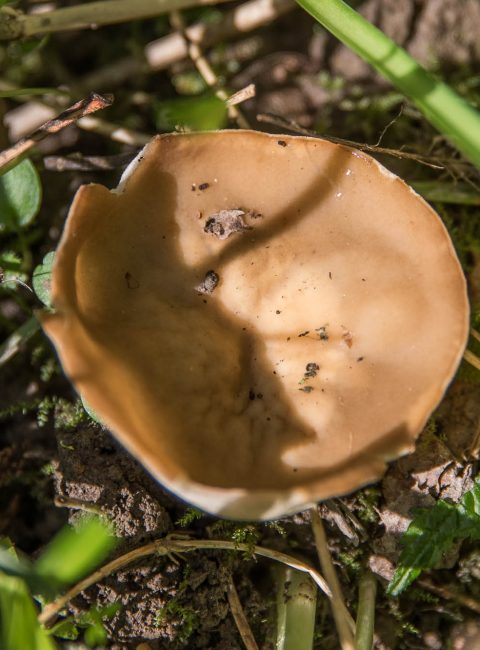
Cooking bleach cups (Disciotis venosa)
Bleach cups have a very pleasant taste very similar to that of morels. Their delicate but firm structure and taste make them a welcome change in the kitchen after the harsh winter months. Be aware that they have to be cooked before consumption and that they are slightly poisonous when eaten raw.
Like other morels, the mushroom is ideal for drying. After soaking in water, the mushroom can be used as fresh. So if you find a large amount that cannot be used immediately in the kitchen, it makes sense to store this mushroom dried for leaner times.
In terms of taste, the mushrooms are suitable for all morel dishes. Due to their brittle consistency, they are particularly good in sauces or in stir-fried vegetables. Bleach cups in cream are a particularly delicious dish. We also like to eat them with fresh wild vegetables like hop shoots and wild garlic which grow usually at the same time in spring.

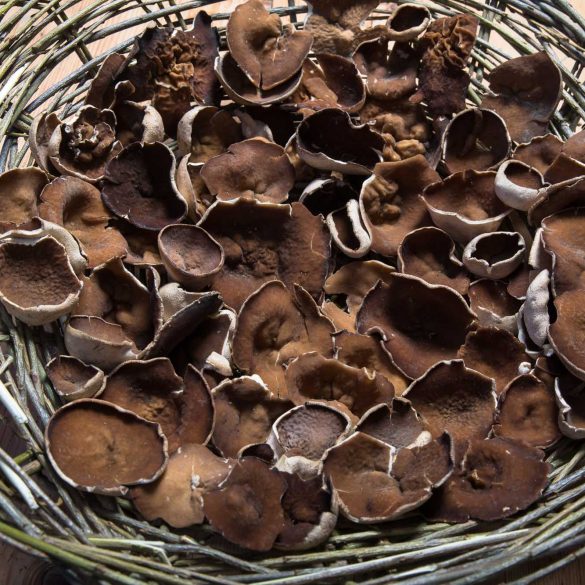
Ingredients
- 600g bleach cups (cup morels)
- Cream (alternatively you can also use cooking cream on Soya base if you prefer a vegan version)
- Olive oil (or a more neutral oil) / butter
- Pasta
- Salt and pepper to taste
Instructions
- Clean the mushrooms and remove the stem.
- Tear the bleach cups into small pieces.
- Briefly sauté the pieces in a pan with a tablespoon of butter or olive oil
- Pour in the cream and let simmer.
- Then salt and pepper to taste.
- They can be served with pasta or spaetzle.
Notes
Avoid using onions, shallots or garlic as they will undermine the subtle morel flavor. The pungent smell of chlorine dissipates when cooking.


Find some inspiration in other mushroom recipes
We have compiled this overview with the best of knowledge and belief, but do not claim to be complete and reserve the right to make errors.
Learn more about poisonous mushrooms and mushroom poisons here
↓↓↓
